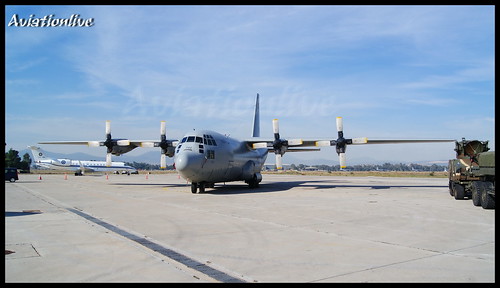 |
O ένας από τους τέσσερις κινητήρες μεταγωγικού αεροσκάφους C-130 "κράτησε" λίγο μετά την απογείωσή του από το αεροδρόμιο «Διαγόρας» της Ρόδου. Το αεροσκάφος της 356ΜΤΜ που μετέφερε 50 επιβατες πραγματοποίησε αναγκαστική προσγείωση.
Ιούνιος 2014, την επόμενη ημέρα του Kavala Air Sea Show 2014 ο επικεφαλής της ομάδας Επιδείξεων ''ΖΕΥΣ'' Σμηναγός Γιώργος Ανδρουλάκης παραχωρησε συνέντευξη στο Ena Channel και στην εκπομπή "Άνθρωποι" με την Χριστίνα Νεφραίμ.
 |
| To αεροσκάφος της ομάδας επιδείξεων μόλις έχει πατήσει σε Ελβετικό έδαφος... ενδιαφέρουσα λεπτομέρεια οι CFT που φορά (C) Michael Hind |
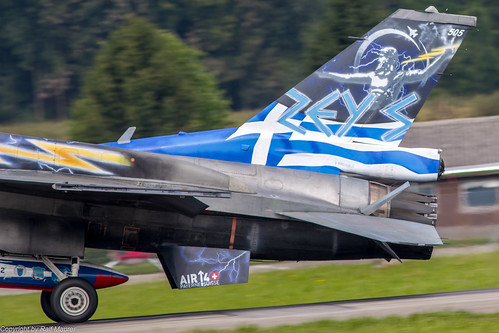 |
| Tailart... (C) Ralf Maurer |
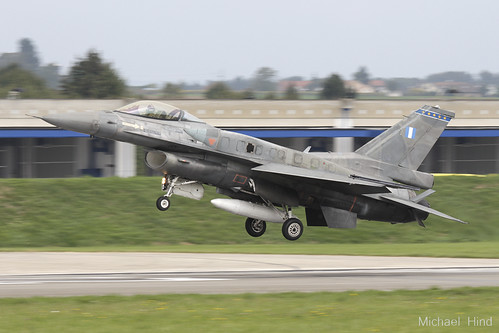 |
| To "εφεδρικό" 504... (C) Michael Hind |
Απ'οτι φαίνεται η πρόσφατη εγκατάλειψη στην 8'inci Ana Jet Üssü δεν είναι παρά ένα νέο περιστατικό τύπου Ayşegül Akgül... Σύμφωνα με επικαιροποιημένα δημοσιεύματα του τουρκικού ηλεκτρονικού το εκσυγχρονισμένο F-16C προτού καταπέσει ξύρισε κολόνα ηλεκτροδότησης. Τα δημοσιεύματα δεν προσδιορίζουν αν η πτώση του αεροσκάφους οφείλεται στη "στενή επαφή" ή αν το μαχητικό έχανε ύψος λόγω βλάβης του κινητήρα τη στιγμή που η χειριστής προσπαθούσε να το προσγειώσει.
Στα πλάνα του Dogan Haber Ajanci και του Anadolu Ajanci διακρίνεται η κολόνα ηλεκτροδότησης που "πήρε" η Υποσμηναγός Burcu Arpacı.
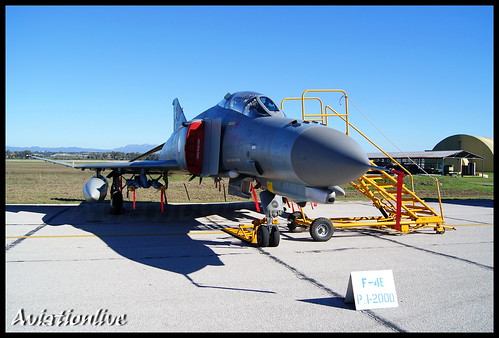 |
Δυστυχώς η πολυαναμενόμενη συμμετοχή της ΠΑ με ένα F-4E AUP Phantom στη στατική της Διεθνούς Αεροπορικής Επίδειξης της Μάλτας, ακυρώθηκε. Σχετική ανακοίνωση αναρτήθηκε προ ημερών και από την διοργάνωση στην επίσημη σελίδα του Int. Malta Airshow '14.
Παρελήφθη από τη Γερμανία τον Οκτώβριο του 1980 με 2.061 ώρες πτήσης στο ενεργητικό του, το πρώην 23+21 εντάχθηκε στη δύναμη της 116ΠΜ. Το 1989 αποσύρθηκε από την ενεργό δράση και το 1993 τέθηκε σε αποθήκευση στην 132ΣΜ με έδρα το Αγρίνιο. Το 2001 (;) το ταξίδι του Αστρομαχητή θα συνεχιστεί... το 7205 θα τοποθετηθεί στη είσοδο του Αιγίου.
Τρεις άνθρωποι σκοτώθηκαν και άλλοι εννέα τραυματίστηκαν όταν μαχητικό αεροσκάφος συνετρίβη, σε κατοικημένη περιοχή στην πόλη Τομπρούκ. Το δυστύχημα σημειώθηκε κατά τη διάρκεια τιμητικής διέλευσης εις μνήμην Λίβυου χειριστή ο οποίος έχασε τη ζωή του τέσσερις ημερες πριν.
Ένα F-16 απώλεσε η THK στις 17:10... το συμβάν έλαβε χώρα στην 8'inci Ana Jet Üssü με έδρα το Diyarbakir. Σύμφωνα με τις πρώτες "πληροφορίες" το αεροσκάφος ήταν διθέσιο (στην ανακοίνωση των Τουρκικών ΕΔ δεν προσδιορίζεται) αν και από τις φωτογραφίες και τα διαθέσιμα στοιχεία προκύπτει ότι το αεροσκάφος ήταν F-16C CCIP. Η χειριστής του αεροσκάφους διαπίστωσε βλάβη στο κινητήρα και έκανε επιτυχή χρήση του εκτινασσόμενου καθίσματος.
 |
| Διακρίνεται το αεροσκάφος πλησίον του συρματόσχοινου ανάσχεσης. Το F-16 ανήκε στην 182 Filo "Atmaca" κατά την επίσημη ανακοίνωση, φορά μεν διακριτικό της 161 Filo στο κάθετο σταθερό. |
 |
Διεθνές ενδιαφέρον υπάρχει για την Αεροπορική Παρέλαση της 25ης Μαρτίου... Oι υπεύθυνοι του ταξιδιωτικού γραφείου 4Αviation εντυπωσιασμένοι από τις φωτογραφίες των Ελληνικών εναέριων μέσων με φόντο τα κτίσματα της Κλασικής Αθήνας, αφού συγκέντρωσαν τις απαραίτητες πληροφορίες (διάρκεια της παρέλασης, τα σημεία φωτογράφισης/πρόσβασιμότητα, τα ελάχιστα "χιλιοστά" του φακού) ευελπιστούν να "μαζέψουν" συμμετοχές ώστε το Μάρτιο του 2015 να δώσουν το παρών στο λόφο του Λυκαβηττού ή σε κάποια ταράτσα Αθηναικού ξενοδοχείου και να απαθανατίσουν και οι ίδιοι την "Αεροπορική Παρέλαση" της Αθήνας.
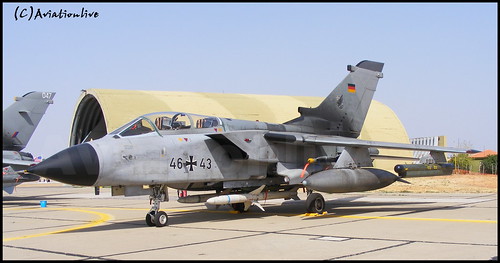 |
Το Tornado γιόρτασε στις 14 Αυγούστου τα 40 χρόνια από την πρώτη πτήση του το 1974. Το αεροσκάφος βρέθηκε στον ουρανό για πρώτη φορά στο Manching της Νότιας Γερμανίας σηματοδοτώντας μια επιτυχημένη πορεία που σαν αποτέλεσμα είχε την παραγωγή περίπου 1000 αεροσκαφών ικανούς να αναλάβουν ρόλους αναχαίτισης, βομβαρδισμού, τακτικής αναγνώρισης και καταστολής αεράμυνας.
Πηγή
Οκτώβριος 2005, ο Eric Hechs και ο Katsuhico Tokunaga, για λογαριασμό του περιοδικού CodeOne επισκέπτονται την 115 Πτέρυγα Μάχης για να καταγράψουν την αξιοποίηση των τότε νέων F-16 Block 52+. Ο Erich Hechs θα μας μεταφέρει τους έντονους ρυθμούς λειτουργίας της Πτέρυγας, τις σκέψεις των χειριστών για το νέο αεροσκάφος και τις CFT αλλά και τις σκέψεις για την αξιοποίηση της πίσω θέση του "D" από ΧΟΣ που δυστηχώς δεν προχώρησαν...
Παράλληλα ο Katsuhiko Tokunaga την περίοδο εκείνη θα πραγματοποιήσει μια από τις καλύτερες - αν όχι την καλύτερη - εναέρια φωτογράφιση Ελληνικών μαχητικών... τo Ελληνικό D "Missionised" με τις σύμμορφες δεξαμενές καυσίμου, έγινε εξώφυλλο στο CodeOne 2006 vol.21 και το διαδίκτυο πλημμύρισε με φωτογραφίες των γερακιών της 115 ΠΜ.
Παράλληλα ο Katsuhiko Tokunaga την περίοδο εκείνη θα πραγματοποιήσει μια από τις καλύτερες - αν όχι την καλύτερη - εναέρια φωτογράφιση Ελληνικών μαχητικών... τo Ελληνικό D "Missionised" με τις σύμμορφες δεξαμενές καυσίμου, έγινε εξώφυλλο στο CodeOne 2006 vol.21 και το διαδίκτυο πλημμύρισε με φωτογραφίες των γερακιών της 115 ΠΜ.
Το κείμενο του Eric Hechs όπως δημοσιεύθηκε στο Code One :
A popular destination for Greek and other European tourists, Crete is known for its caves, Minoan ruins, beautiful beaches, mountainous countryside, and scenic Mediterranean vistas. Vacationers come to this Greek island to relax and enjoy the more leisurely island pace.
Hellenic Air Force pilots and personnel come to Souda AB, which is located on the northern shore of Crete, to generate sorties in the new Block 52+ F-16s. "We are preparing for twenty-six sorties today," says Capt. Adam Mitsotakis, chief maintenance officer of the 340 Squadron at Souda. "We average about twenty-three sorties per day for 340 Squadron alone. Last week my squadron flew 115 sorties. We have two days of night flying this week. We also have to support our alert aircraft, which must be ready to scramble at a moment's notice."
340 Fox Squadron and 343 Star Squadron constitute the 115th Wing at Souda AB, which shares a runway with the commercial airport that serves Chania, the island's second-largest city. The wing, which has fully converted from A-7 Corsair IIs to the Block 52+ F-16 in the last two years, is commanded by Col. Ioannis Kortogiannis. "Both of our squadrons operate at an impressive pace," says Kortogiannis. "But what is most impressive about our activities here at Souda is how quickly the Hellenic Air Force has incorporated this advanced fighter into its operations."
Quickly, indeed. The Greek government announced its selection of the Block 52+ F-16 in April 1999. The program, called Peace Xenia III, involved the purchase of fifty aircraft with an option for an additional ten. The letter of agreement, formalizing the purchase, was signed in March 2000. The contract was issued to Lockheed Martin in June 2000. The option for the ten additional aircraft was exercised in September 2001.
The first aircraft was delivered on schedule October 2002 in a record span time of only twenty-eight months after the initial contract was issued. The first Block 52+ aircraft arrived at Souda AB in June 2003. The Hellenic Air Force, or HAF, declared its two squadrons at Souda operational in April 2004. The last of the sixty aircraft purchased was delivered to the base the following June.
"Some of our first operational missions involved protecting the 2004 Summer Olympic Games," notes Kortogiannis, who has 1,400 hours in the HAF's earlier Block 30 F-16s, and more than 300 hours in the Block 52+. "The Souda-based F-16s covered the games in Athens and in nearby Iraklion, Crete's largest city. The 24-7 coverage typically involved launching and recovering two aircraft every three hours."
"I had the honor of flying some of the missions," says Lt. Col. George Fasoulas, 343 Squadron commander. "Though important, the Olympic Game missions were somewhat boring — flying big circles over a large area night and day. We were too high to see any events." The HAF Block 52+ weren't the only fighters in the air. "The Olympics were protected by all of the interceptor squadrons of the HAF," continues Fasoulas, "including our F-4 squadrons and F-16 squadrons from other bases."
Advanced 4th generation capabilities
Today, Fasoulas and his fellow F-16 pilots at Souda are focused on mastering some of the more advanced features of their Block 52+ jets. "Our capabilities with this aircraft go a step beyond your standard F-16," notes Fasoulas. "We are just beginning to incorporate some of the systems associated with precision-guided munitions."
While some of these capabilities are relatively new to the squadrons, they have been operating from Day One with most of the other capabilities made possible by the Block 52+. The Northrop Grumman radar tends to get the greatest accolades. "The radar is superb," Fasoulas continues. "US Air Force pilots who delivered the aircraft to Souda told us how lucky we are to have such a radar. They said they were most impressed by its range because they could see air traffic at huge distances. Those comments made us appreciate the unique capabilities we have with this aircraft."
While a major improvement, the radar does not change the external appearance of the Block 52+. The conformal fuel tanks, or CFTs, on the other hand, alter the appearance of this F-16 radically. The two tanks, which are attached on the upper fuselage, give the Block 52+ a muscular look. More importantly, they add about 3,000 pounds of fuel without sacrificing a weapon station.
"We had some hesitation with the CFTs in the beginning because we knew so little about them," admits Fasoulas. "We didn't know how the airplane would behave with the extra weight. But we discovered the airplane behaves perfectly. The CFTs are favored by most of the pilots because they can fly longer and go farther. And they experience virtually no difference in the handling characteristics. We can still pull nine g's with the CFTs.
"In fact, the Block 52+ has similar handling characteristics to our Block 30 and Block 50 F-16s," Fasoulas continues. "Handling is actually a little calmer, which has nothing to do with the CFTs. I sense that the Block 52+ has a more evolved flight control system."
"The extra range benefits the air-to-ground missions slightly more than the air-to-air missions because range is more critical for those missions," Fasoulas adds. "Still, the tanks also benefit air-to-air missions because the pilots can patrol for longer periods.
"The CFTs extend the duration of our missions. The actual time depends on the profile," adds Capt. Padelis Zambakolas, a pilot with 340 Squadron. "They can extend range for hundreds of miles as well."
All two-seat Block 52+ F-16s feature a dorsal fairing designed to create space for avionics normally contained behind the pilot on single-seat aircraft. The fairing has room for additional avionics and chaff and flare dispensers as well. However, the most distinguishing feature of the Block 52+ two-seater is the ability to display mission-critical information in the backseat. This feature allows a backseater to act as a weapons system operator, or WSO; that is, to concentrate on or to control weapons or sensors from the backseat while the pilot operates the aircraft from the front seat.
"A missionized backseat is nothing new for the Hellenic Air Force," Fasoulas says. "We have flown weapons system operators for years in the backseat of our F-4 aircraft. However, with the Block 52+ F-16s, we don't have dedicated WSOs as we do with the F-4s. Instead, we fly our two-seat F-16s with two combat-ready pilots."The HAF is evaluating ways to capitalize on the capabilities offered by a missionized backseat.
Night vision goggles, helmet-mounted displays, and other systems and weapons will affect those evaluations as these capabilities are added to the aircraft.
"Other air forces operate F-16s with missionized backseats," says Michopoulas. "But each one has learned how to get the most out of such a capability on its own. The backseater controls his multifunction displays. He can change the sensor of interest independently from the pilot in the front seat. So far, the system appears to be most beneficial in combat situations that require a heavy workload on a single pilot."
Even though they have been operational for a relatively short time, pilots and personnel from Souda have deployed their advanced F-16s to other countries, among them Italy, Norway, and the Netherlands. "Our most recent deployment to Italy involved flying both day and night missions in Operation Destined Glory in Sardinia," explains Capt. Michail Koukouvas. "We flew as interceptors in air-to-air missions and shot simulated air-to-ground missiles during suppression of enemy defense missions. We gained a lot from that experience."
The experience enlightened other NATO pilots as well. "They are interested in our color displays and in the improved situational awareness the Block 52+ radar provides," adds Capt. Charalambos Eskioglou. "They want to see how our data link works. The detection ranges impress them. They are also impressed with our debriefings because our in-flight data recorder captures information from all sensors for the entire duration of the mission."
Maintaining High Standards
As pilots at Souda come up to speed with all the new capabilities offered by their advanced F-16s, maintenance personnel at the base have to keep up with the rigorous flying schedule. They are also learning how these new capabilities affect their own responsibilities. To meet the needs of the new aircraft, the HAF is also modernizing the infrastructure at Souda. New facilities include two squadron operational flight buildings, an avionics intermediate shop, two maintenance hangars, a fuel facility, a wash/paint facility, and a LANTIRN shop.
"Because the F-16 Block 52+ is the most advanced aircraft flown in the Hellenic Air Force, the HAF has given us some of the best mechanics," explains Mitsotakis, who has about ninety maintainers reporting to him in his lead maintenance role with 340 Squadron. "The quantity of personnel may be small, but their quality and experience levels are very high. Sixty percent are maintainers from previous F-16 blocks."
Fortunately, the airplane itself helps out. Troubleshooting is faster and easier because the Block 52+ provides more information to technicians in the form of more detailed fault codes.
Manufacturers are also providing technical support. "The A-7 didn't include support from the US Navy or from its original manufacturer, so we had to rely on — or develop — our own expertise," says Mitsotakis. "For the F-16, we have our friends at Lockheed Martin and Pratt & Whitney here on base to help us. That has created a very good situation."
"The airplanes are performing beyond our expectations," says Fasoulas, who has been at Souda since the first F-16 arrived. "We have been flying day and night for the last two weeks and haven't seen a single system failure. We expected the engines to perform well because American squadrons were having such good experiences with the Pratt & Whitney F100-PW-229s, but we are seeing similar performance with the aircraft as well. On our deployment to Sardinia, we flew four aircraft twice a day. We took some engineers with us, but most of them were not needed. Technicians who accompanied us on the deployment got to enjoy a nice vacation in Sardinia."
Creating Advanced Pilots
Some of the missions flown from Souda are for training pilots who are new to the Block 52+. The base has a dedicated replacement training unit, the 115 SMET, for training newly graduated pilots and pilots experienced in A-7, F-4, and F-5 units.
"We get our instructor pilots and our aircraft from the two squadrons here," says Lt. Col. Demetrius Sideridis, commander of the 115 SMET. "We have eight SMET instructors who train twelve to fifteen students per year. The training requires about fifty flights and lasts about ten months. Pilots from A-7s have some avionic experience applicable to the F-16 because our A-7s have a head-up display. Experienced F-4 and F-5 pilots, that is, those with 100 hours or more flying time, don't have problems with the transition."
Transition training for pilots coming from other Block 30 or Block 50 F-16 units is done in the two operational squadrons. Transitioning from Block 50 to Block 52+ requires roughly four flights and about thirty to fifty hours of classroom instruction. "The transition for existing F-16 pilots depends on their flight experience," adds Sideridis. "The Block 50 is similar to the Block 52+ in many respects. The Block 30, on the other hand, doesn't have a horizontal situation display and the advanced avionics found in the 50 and 52+."
The squadrons and the training unit make use of a modern F-16 simulator on the base for realistic ground training. The 180-degree field of view simulator has a full-up Block 52+ cockpit with realistic visual presentations. The training unit has its own desktop simulator as well.
"Generating new Block 52+ pilots is extremely important at this point in our development," says Sideridis. "Our air force initially had two F-16 squadrons that we split into four squadrons when the Peace Xenia II Block 50 aircraft arrived in 1997. As soon as we recovered from that expansion, we had to create two more F-16 squadrons here at Souda. These Block 52+ F-16s have an even greater capability, so our current challenge is to create new pilots for a more advanced aircraft. We're handling the challenge quite well."
"Souda is a new air base," says Col. Kortogiannis as he peers out a window of his office in the 115 Wing headquarters building, "and Crete is isolated from the rest of Greece. Most of our personnel are not from here, so they have to fly or use the ferry to see their families — when they can. Our other F-16 wing, the 111th at Nea Anchialos, has set very high standards for the Hellenic Air Force. Within the 115 Wing, we have to merge a lot of pilots with experience in many aircraft types with a few pilots experienced in the F-16. Once we catch up with the experience levels of our other F-16 units, we can begin taking advantage of the new capabilities this aircraft has to offer. Our contributions will make a huge difference for the Hellenic Air Force."
Φωτογραφίες Κ. Tokunaga












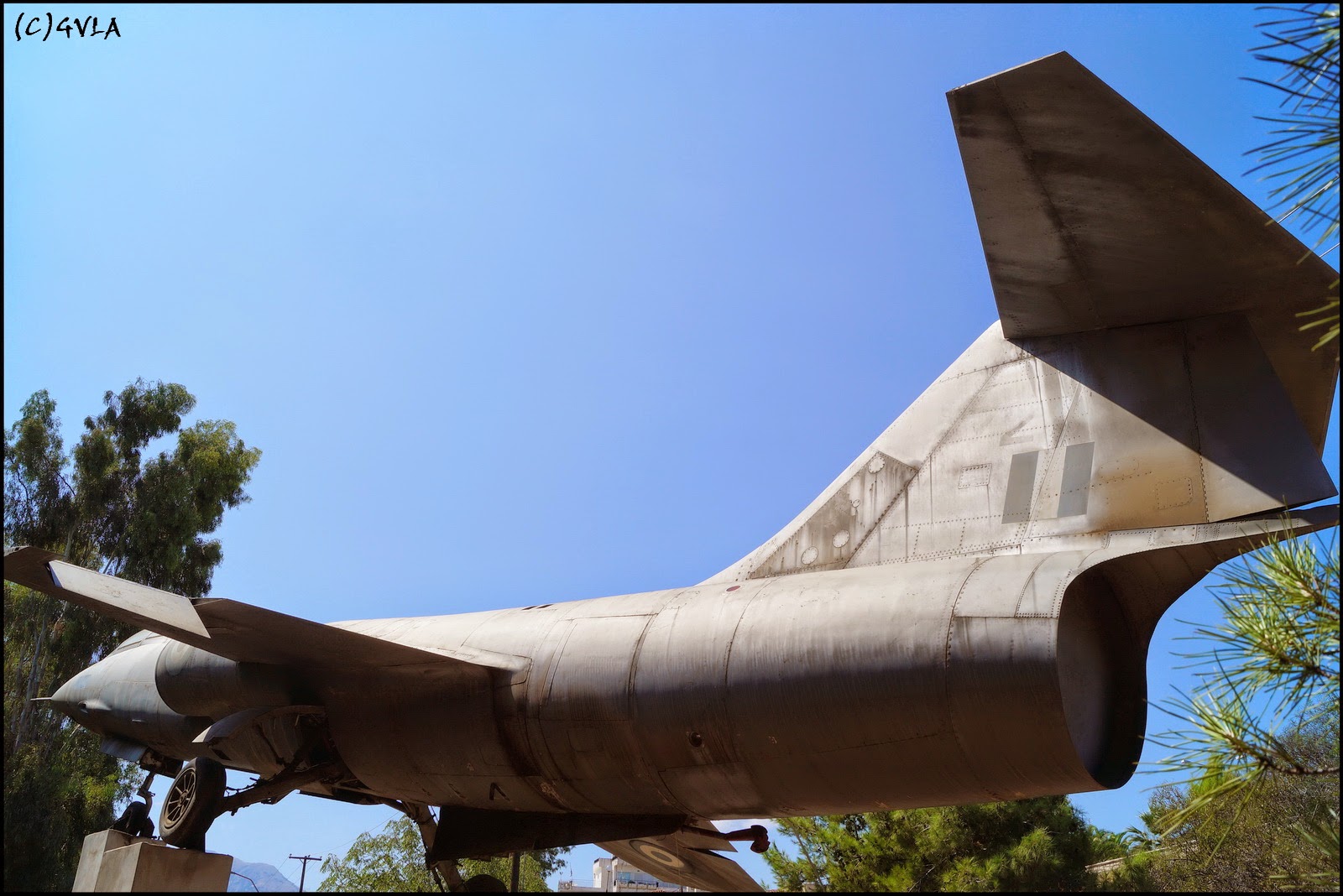






















Πρόσφατα Σχόλια